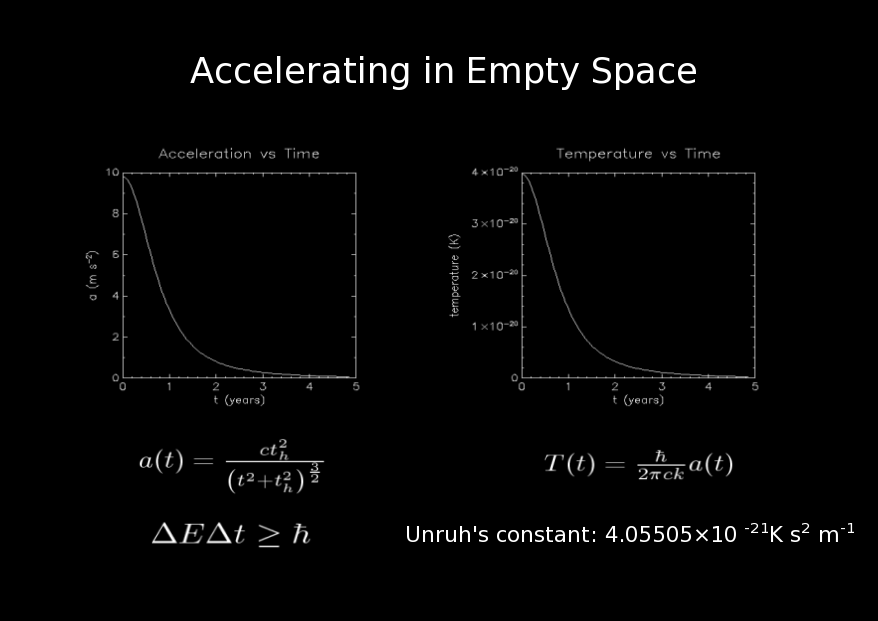










A little more calculus shows that our acceleration will be given by the above expression. We would experience a force corresponding to our acceleration that is equivalent to a gravitational field. The maximum acceleration is the acceleration that the ship has at time 0, which is also the acceleration that the ship would have in Newtonian physics, i.e. 1g. The acceleration decreases over the course of the trip because the resistance to acceleration, i.e. the mass, increases as our velocity increases.
Since empty space is permeated with zero-point fluctuations in quantum fields, we will find ourselves immersed in a sea of particles and find that the space we're traveling through is warmer than it would be if we weren't accelerating. The heat and particles come from pairs of virtual particles created in accordance with the uncertainty principle, where one particle lies inside the hidden region and the other particle lies outside of the region. I've repeated the relevant form of the uncertainty principle on the slide to remind us. The unknown and random properties of the hidden partners in the virtual pairs make the energy that we measure random, which means that we perceive the energy as heat rather than in some other, more structured form. Our own engines provide the energy required for making the virtual particles real.
Bill Unruh found that the temperature of the particles will be proportional to our acceleration. Notice that the factor relating temperature to acceleration is very small, as are the temperatures for our hypothetical journey. So we would have to have an extremely sensitive thermometer to notice this effect during our trip.
I am the author of the images and text except where otherwise indicated. Please contact me for permission if you wish to use any of my images or text.
Created on Wednesday 03 May 2006 by Mark A. Martin with KPresenter